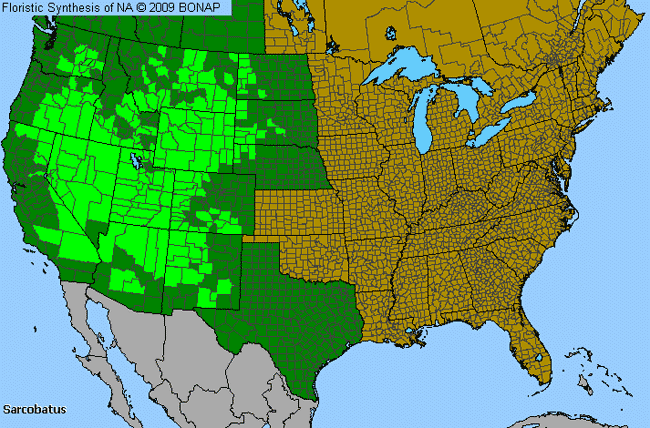Greasewood (Sarcobatus)

Greasewood Genus Details

Greasewood is an herb with deep roots, spiny leaves and very small flowers. The flowers are arranged in a spike-like, floral cluster. The inedible fruit is called an achene.
Greasewood Allergy Info

This genus is usually considered only a minor cause of allergy.
Greasewood Pollen Description

Grains have a fundamental spheroidal structure with pantoporate apertures. The pollen grains of Chenopodiaceae are similar to those of the Amaranthaceae family. Sarcobatus pollen grains have 14-20 pores.
Pollen grains are typically 24-32 micrometers in diameter.

This plant is a member of the Chenopodiaceae pollen type group. This chenopod pollen grain photo represents all members of this group.

This plant is a member of the Chenopodiaceae pollen type group. This chenopod pollen grain photo represents all members of this group.
Species in This Genus

Allergenicity Legend:
 Mild Allergen |
Mild Allergen |
 Moderate Allergen |
Moderate Allergen |
 Severe Allergen |
Severe Allergen |
 Allergy Test Available
Allergy Test Available
Greasewood (Sarcobatus) is a genus of the CHENOPODIACEAE family.
This genus includes the following allergenic species:
This genus includes the following allergenic species:











